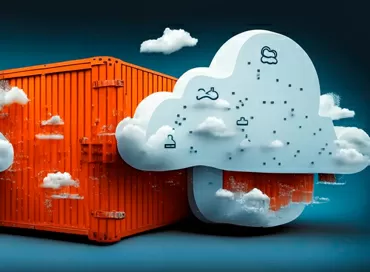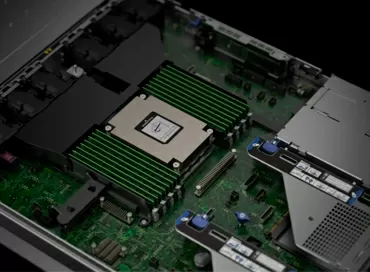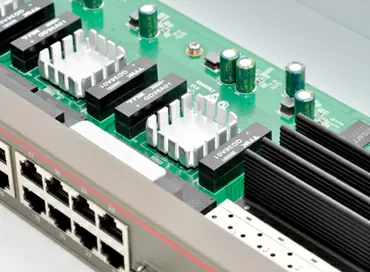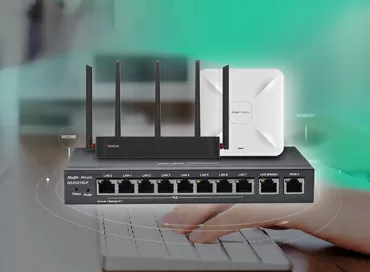What is Edge Computing and why edge computing is an escape from the cloud
We recently wrote about how the oil and gas industry uses IoT to place hundreds and thousands of sensors on its facilities. With so much input data transmitted by all these multiple IoT devices, it is no longer practical to transfer data to the cloud or a shared data Center for processing: some mechanisms for analyzing and responding to data from IoT can be implemented locally, in the place where this telemetry is taken and the data itself is produced. In other words, the term "Edge Computing" or "Edge computing" does not mean some physical border, not some abstract type of "cutting edge technology", but that all actions take place "somewhere on the ground", and not in the local data Center or in the cloud.
Typical examples of boundary calculations include:
- Analyzing video from surveillance cameras or other sources
- Autopilot in the car
- Managing robots
That is, what is long/expensive/meaningless to transfer somewhere, loading communication channels at a time when the application is running "in real time". In addition, in a certain sense, local data processing saves money by reducing the amount of data transmitted and stored in a cloud location. The concept of Edge computing has emerged due to the exponential growth of IoT devices that connect to the Internet either to get information from the cloud or to deliver data back to the cloud. And many IOT devices generate huge amounts of data in the course of their operation, which are inherently unnecessary after they are processed.
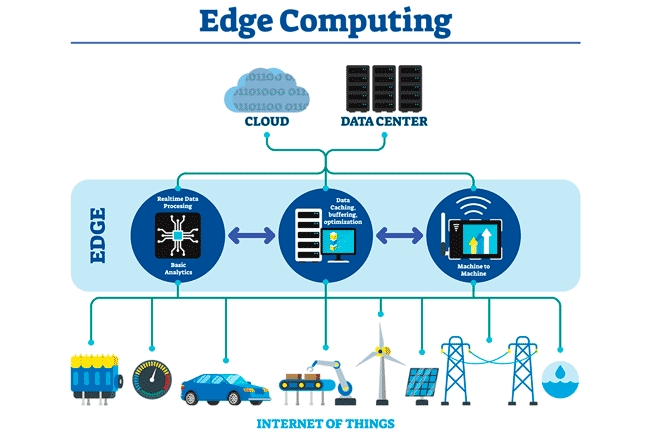
Think of devices that monitor production equipment in a factory, or an Internet-connected video camera that sends real-time video from a remote office. While a single device that produces data can transmit it over the network quite easily, with the growing number of such devices, there are already problems with delays. Instead of a single video camera transmitting live footage, multiply it by hundreds or thousands of devices. Not only will quality suffer due to latency, but the bandwidth costs can be huge.
Peripheral computing hardware and services help solve this problem by providing a local source of data processing and storage for many of these systems. An edge gateway, for example, can process data from an edge device and then send only the necessary data back through the cloud, reducing the need for bandwidth for communication channels. Or it can send data back to the edge device if the application needs to run in real time.
What applies to Edge devices
In General, there is nothing new here: from the point of view of hardware, Edge Computing hardware is more like old-school hardware created before the era of virtualization and the transition to the cloud. "Edge" devices can include a smartphone, a laptop, Iat sensors, a desktop server, and a microwave oven. Naturally, if you have an edge laptop, you should also have an edge network gateway that connects the object's local network to the cloud and a centralized data center. As you might guess, this is an ordinary network gateway, most likely with an integrated controller for managing Wi-Fi access points.
What is the difference between Edge hardware?
"You have coolers and air conditioners in your office, but we may not have a toilet at our facility," - this is the principle that should be followed when approaching Edge Computing. Where you process data, you may not just not have a data center, but there may not even be a place to install a server Cabinet. The server also may not be, his role is quite a can run a laptop, workstation or smartphone. That is, if you remember the first offices where the SAP server was installed right in the accounting department in the middle of the office to make it easier to pull wires, you can say that these people foresaw Edge Computing long before It became mainstream.
In other words, Edge hardware is different:
- Using simple interfaces (RJ45 for twisted pair + WiFi)
- Compact design that allows you to place the device even on a stool, even on the desktop
- Low noise level to work near staff
- Low power consumption, because a permanent source of electricity can be a generator or a solar panel
a Vivid example of an Edge server can be considered Lenovo ThinkSystem SE350:
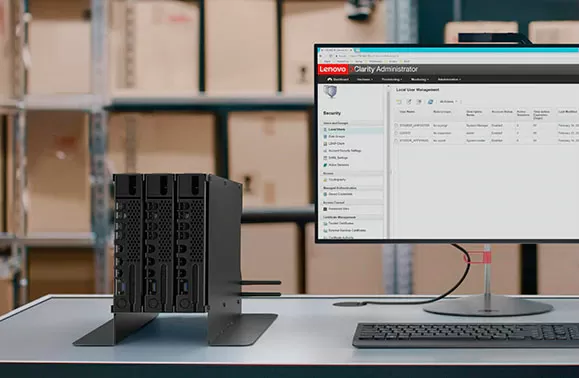
In the photo above, you can see as many as three such servers installed on the operator's desktop in the warehouse. The network is connected via Wi-Fi, and even the antennas are folded, obviously so that they are not caught and broken, and stacking on an ordinary steel plate is like a casual style of clothing: the more brutal, the better. Interestingly, the server is built on the Intel Xeon 2100 SoC, and in our review we considered the Xeon-D 2143, and this is a very good processor with up to 16 physical cores + 1 AVX2 block + South bridge + 10G LAN in one package.
In practice, modern processors have become so powerful that Edge Computing can handle not only warehouse accounting, but also accounting, reporting, telemetry processing, and even machine learning tasks on ready-made models, or where using a GPU is impractical.
Why Edge Computing is a new trend
For many companies, using the cloud is impractical due to the high cost of data channels. Increasingly, the biggest advantage of Edge Computing is the ability to process and store data faster than in the cloud, which allows you to create more efficient real-time applications.
Once upon a time, a smartphone scanning a person's face would have had to run a facial recognition algorithm through a cloud service, which would have taken a long time. Using the edge computing model, the algorithm can work locally on the edge server or gateway, or even in the smartphone itself, given the growing power of smartphones. Applications such as virtual and augmented reality, self-driving cars, smart cities, and even building automation systems require fast processing and response.
"Edge computing has evolved significantly since the days OF Robo [Remote Office Branch Office] isolated it centers, “says Cuba Stolarski, research Director at IDC, in the report”global edge infrastructure (computing and storage) forecast for 2019-2023." "With improved connectivity to improve edge access to more core applications, and with new IoT and industry business precedents, edge infrastructure is poised to become one of the main engines of growth in the server and storage market over the next decade and beyond.”
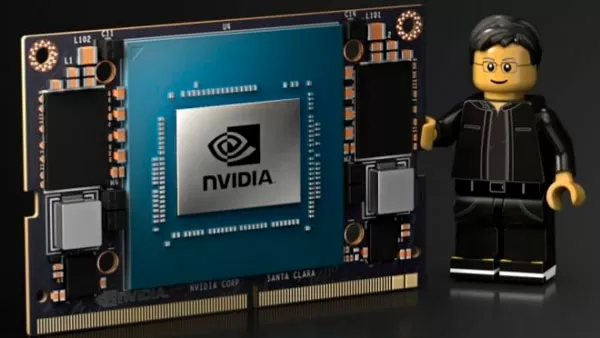
Companies like NVIDIA have recognized the need for more "on-the-ground" processing, so we're seeing new system modules that include artificial intelligence features. Jetson's latest Xavier NX module, for example, is smaller than a credit card and can be embedded in smaller devices such as drones, robots, and medical devices. Artificial intelligence algorithms require a lot of computing power, so most of them work through cloud services.
Privacy and security
However, as with many new technologies, solving one problem can lead to others. As the number of IoT devices grows, it is critical to understand the potential security issues around these devices and to make sure that these systems can be protected. This includes checking that the data is encrypted and that the correct access control methods are being used, and even VPN tunneling.
What about 5G?
Worldwide, operators are deploying 5g wireless technologies that promise the benefits of high bandwidth and low latency for applications. Instead of just offering faster speeds and telling companies to continue processing data in the cloud, many carriers are developing edge computing strategies in their 5G deployments to enable faster data processing in real-time, which is especially important for mobile devices, cars, and robots.
Obviously, while edge computing's original goal was to reduce bandwidth costs for IOT devices over long distances, the growth of real-time applications that require local processing and storage will drive the technology's development in the coming years.
Ron Amadeo
20/11.2019










